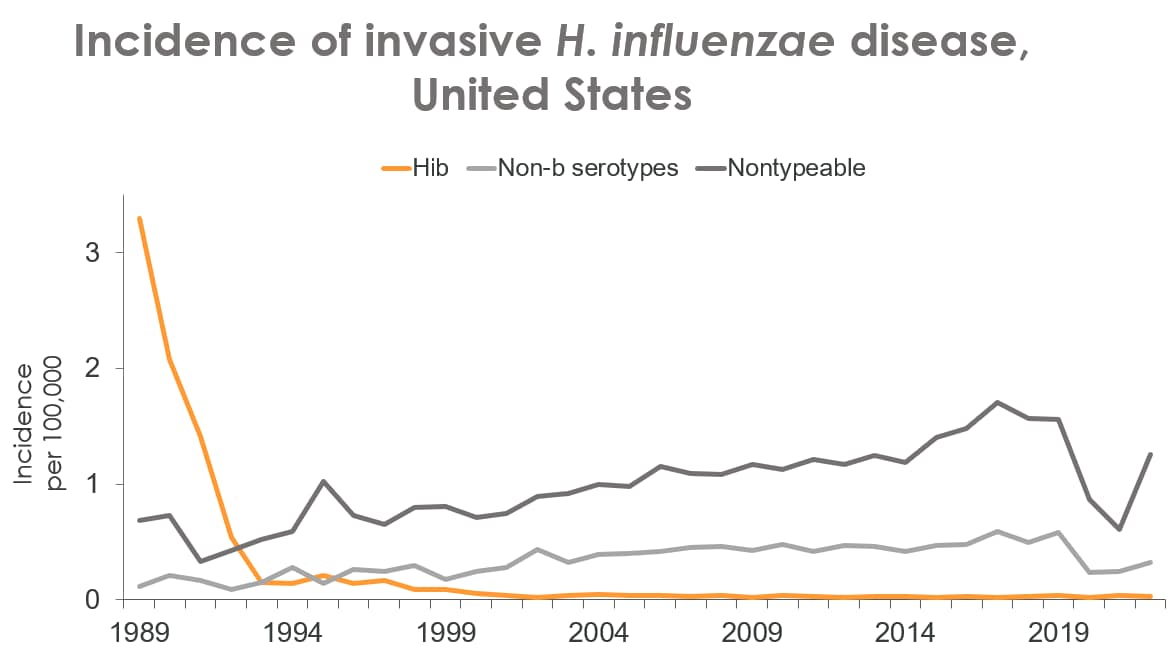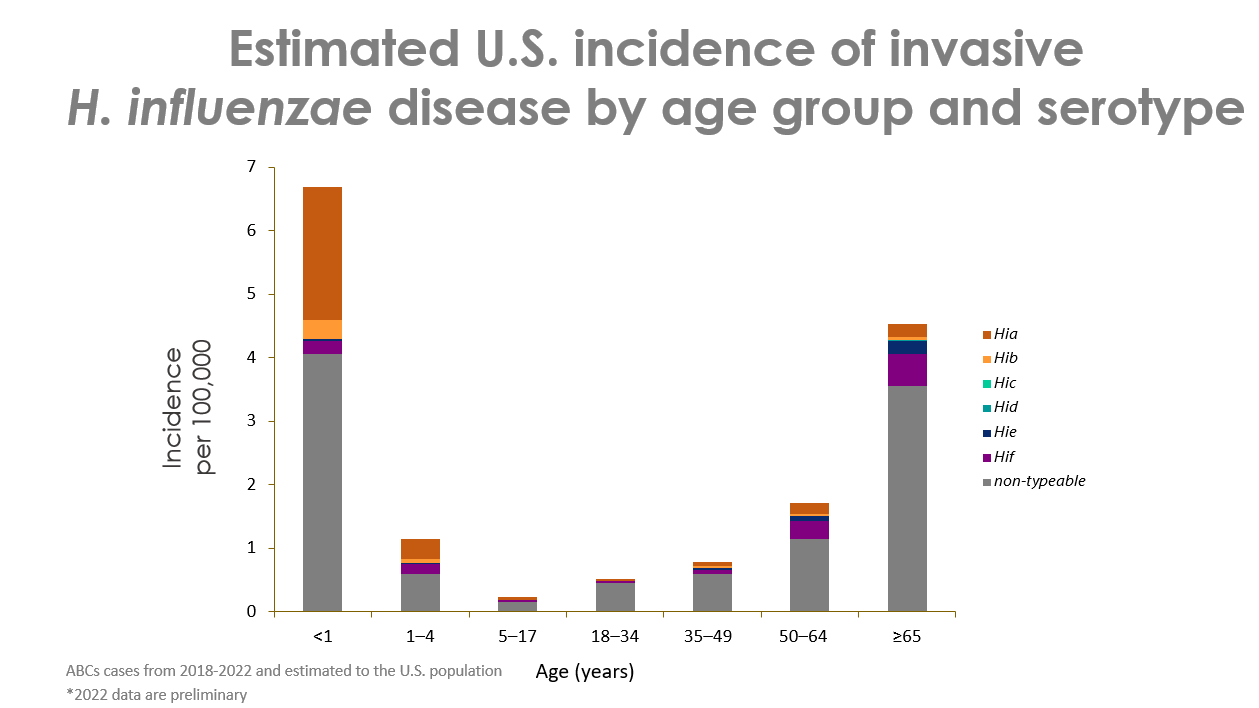Key points
- CDC tracks invasive Haemophilus influenzae disease using 2 surveillance systems.
- Invasive disease refers to when bacteria invade parts of the body, like blood, that are normally free from germs.
- CDC doesn't track non-invasive H. influenzae disease, such as ear infections.

Data systems
National Notifiable Diseases Surveillance System
Invasive H. influenzae disease is a nationally notifiable disease.
CDC collects national information about invasive H. influenzae disease through the National Notifiable Diseases Surveillance System (NNDSS). CDC receives NNDSS data each week.
Active Bacterial Core surveillance
CDC also collects information from laboratories in 10 areas of the country through Active Bacterial Core surveillance (ABCs). ABCs is part of CDC's Emerging Infections Program.
Bact Facts Interactive
How the data are interpreted
Disease trends
The epidemiology of invasive H. influenzae disease has changed since the United States began using Hib vaccines. Hib vaccination began for children in 1987 and for infants in 1990.
Since then, the annual incidence of invasive disease in children younger than 5 years old has changed:
- Type b: Decreased by 99%
- Non-b: Increasing (primarily types a and f)
- Nontypeable: Increasing

Active Bacterial Core surveillance

Active Bacterial Core surveillance
Data definitions
The Council of State and Territorial Epidemiologists (CSTE) released the most recent case definition for H. influenzae disease in 2015.
